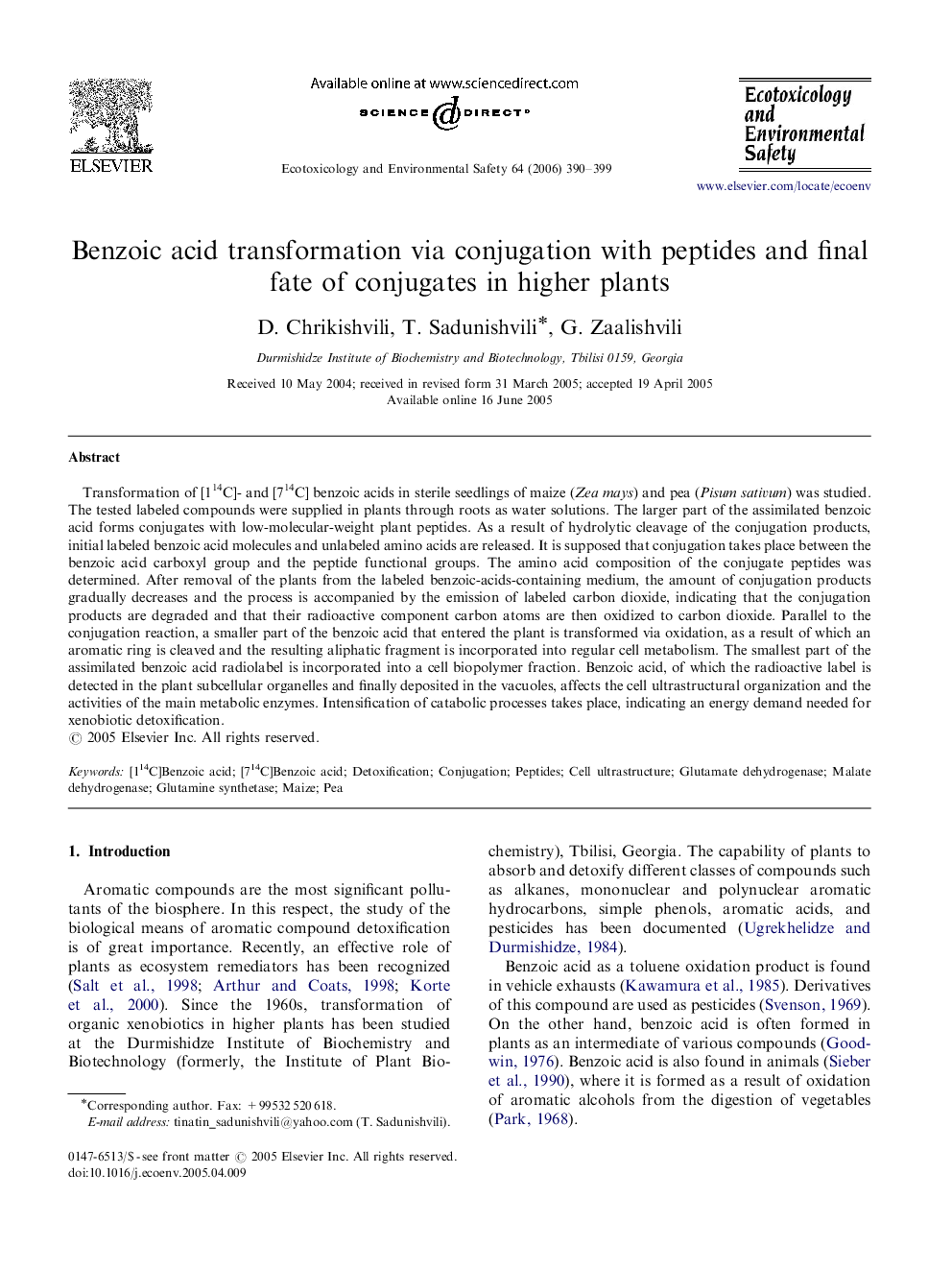| کد مقاله | کد نشریه | سال انتشار | مقاله انگلیسی | نسخه تمام متن |
|---|---|---|---|---|
| 4422580 | 1308555 | 2006 | 10 صفحه PDF | دانلود رایگان |

Transformation of [114C]- and [714C] benzoic acids in sterile seedlings of maize (Zea mays) and pea (Pisum sativum) was studied. The tested labeled compounds were supplied in plants through roots as water solutions. The larger part of the assimilated benzoic acid forms conjugates with low-molecular-weight plant peptides. As a result of hydrolytic cleavage of the conjugation products, initial labeled benzoic acid molecules and unlabeled amino acids are released. It is supposed that conjugation takes place between the benzoic acid carboxyl group and the peptide functional groups. The amino acid composition of the conjugate peptides was determined. After removal of the plants from the labeled benzoic-acids-containing medium, the amount of conjugation products gradually decreases and the process is accompanied by the emission of labeled carbon dioxide, indicating that the conjugation products are degraded and that their radioactive component carbon atoms are then oxidized to carbon dioxide. Parallel to the conjugation reaction, a smaller part of the benzoic acid that entered the plant is transformed via oxidation, as a result of which an aromatic ring is cleaved and the resulting aliphatic fragment is incorporated into regular cell metabolism. The smallest part of the assimilated benzoic acid radiolabel is incorporated into a cell biopolymer fraction. Benzoic acid, of which the radioactive label is detected in the plant subcellular organelles and finally deposited in the vacuoles, affects the cell ultrastructural organization and the activities of the main metabolic enzymes. Intensification of catabolic processes takes place, indicating an energy demand needed for xenobiotic detoxification.
Journal: Ecotoxicology and Environmental Safety - Volume 64, Issue 3, July 2006, Pages 390–399